Product Description
Drive Pipe Spline Shaft Disc Flange Gear Rubber Jaw Motor Spacer Beam Rigid Fluid Chain Nm Mh HRC Pin Fenaflex Spacer Elastomeric flexible gear Coupling
Application of Shaft Chain Coupling
A shaft chain coupling is a type of coupling that is used to connect 2 shafts that are not perfectly aligned. The coupling consists of a chain that is connected to 2 sprockets, 1 on each shaft. The chain allows the shafts to move slightly relative to each other, which helps to compensate for misalignment.
Shaft chain couplings are used in a wide variety of applications, including:
- Conveyors: Shaft chain couplings are used in conveyors to transmit power from the motor to the conveyor belt.
- Pumps: Shaft chain couplings are used in pumps to transmit power from the motor to the pump shaft.
- Fans: Shaft chain couplings are used in fans to transmit power from the motor to the fan shaft.
- Generators: Shaft chain couplings are used in generators to transmit power from the turbine to the generator rotor.
- Wind turbines: Shaft chain couplings are used in wind turbines to transmit power from the turbine to the generator rotor.
Shaft chain couplings are a versatile and reliable type of coupling that can be used in a wide variety of applications. They offer a number of advantages over other types of couplings, including:
- Can compensate for misalignment: Shaft chain couplings can compensate for misalignment up to 2 degrees. This makes them ideal for applications where the shafts are not perfectly aligned, such as when the equipment is installed in a new location or when the equipment is subject to vibration.
- Easy to install: Shaft chain couplings are easy to install and maintain. They can be installed without special tools or training.
- Available in a variety of sizes and styles: Shaft chain couplings are available in a variety of sizes and styles to meet the needs of different applications. This makes it easy to find a coupling that is the right size and style for your application.
- Highly efficient: Shaft chain couplings are highly efficient, meaning that they transmit a large percentage of the power from the driving shaft to the driven shaft. This can save money on energy costs.
- Durable: Shaft chain couplings are durable and can withstand a wide range of operating conditions.
Here are some of the disadvantages of using shaft chain couplings:
- Cost: Shaft chain couplings can be more expensive than other types of couplings.
- Maintenance: Shaft chain couplings require periodic maintenance, such as checking the coupling for wear and tear and lubricating the chain as needed.
Overall, shaft chain couplings are a versatile and reliable type of coupling that can be used in a wide variety of applications. They offer a number of advantages over other types of couplings, but they also have some disadvantages. The best type of coupling for a particular application will depend on the specific requirements of that application.
| Standard Or Nonstandard: | Standard |
|---|---|
| Shaft Hole: | 8-24 |
| Torque: | >80N.M |
| Bore Diameter: | 19mm |
| Speed: | 4000r/M |
| Structure: | Flexible |
| Samples: |
US$ 9999/Piece
1 Piece(Min.Order) | |
|---|


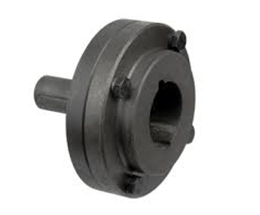
Can Spacer Couplings Accommodate High Torque and High-Speed Applications?
Yes, spacer couplings are designed to accommodate both high torque and high-speed applications. These couplings are known for their ability to transmit torque efficiently between shafts and handle various operating conditions. The design and material selection of spacer couplings allow them to excel in demanding industrial settings. Here’s how they handle high torque and high-speed applications:
1. Torque Capacity: Spacer couplings are often constructed with robust materials such as steel or stainless steel, which provide high torque capacity. The coupling’s design and material properties allow it to transmit substantial amounts of torque without failure. In heavy-duty applications, where high torque is prevalent, spacer couplings are a preferred choice.
2. High-Speed Operation: Spacer couplings are also well-suited for high-speed applications. The design of the coupling ensures a secure connection between the shafts while maintaining balance during rotation. The coupling’s precise machining and balance prevent vibration and misalignment, allowing for smooth operation at high rotational speeds.
3. Torsional Stiffness: Spacer couplings have good torsional stiffness, meaning they resist twisting under torque. This characteristic is essential for high-speed applications, as it helps maintain accurate shaft synchronization and minimizes torsional vibrations.
4. Customization: Manufacturers offer various spacer coupling designs and sizes to cater to specific torque and speed requirements. Depending on the application’s demands, users can select spacer couplings with the appropriate torque and speed ratings.
5. Maintenance: Proper maintenance is essential for ensuring that spacer couplings continue to handle high torque and high-speed applications effectively. Regular inspections, lubrication, and alignment checks can help identify and address potential issues before they escalate into problems.
When choosing a spacer coupling for high torque and high-speed applications, it is crucial to consider factors like the application’s torque and speed requirements, environmental conditions, and the coupling’s material and design specifications. Proper selection and installation of the spacer coupling contribute to the reliable and efficient performance of the machinery.
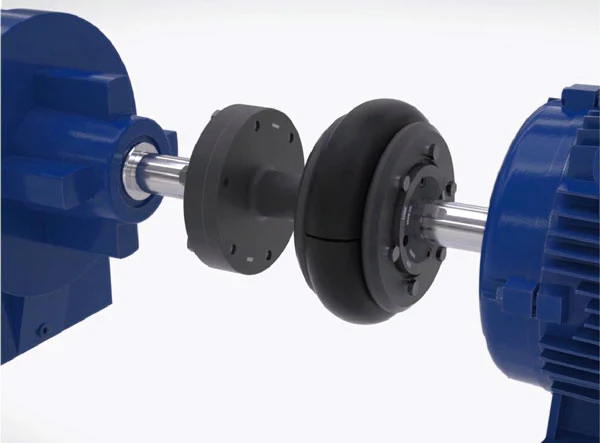
Factors to Consider When Choosing a Spacer Coupling for a Specific System
Choosing the right spacer coupling for a specific system requires careful consideration of various factors to ensure optimal performance and reliability. Here are the key factors to keep in mind:
1. Operating Conditions: Understand the operating conditions of the system where the spacer coupling will be used. Consider factors such as torque requirements, rotational speed, temperature range, and environmental conditions (e.g., corrosive, humid, or dusty environments).
2. Misalignment Compensation: Determine the type and magnitude of misalignment that the coupling needs to accommodate. Spacer couplings can handle angular, parallel, and axial misalignments to varying degrees, so selecting the appropriate coupling design is critical.
3. Shaft Sizes and Types: Ensure that the spacer coupling’s bore size matches the shaft diameters of the connected equipment. Additionally, consider whether the shafts are keyed, splined, or have other special features that may require customization of the coupling.
4. Coupling Material: The choice of material for the spacer coupling depends on the application’s requirements. Common materials include steel, stainless steel, aluminum, and various alloys. Consider factors such as strength, corrosion resistance, and temperature limits when selecting the material.
5. Torque and Speed Ratings: Determine the required torque and rotational speed ratings for the coupling based on the power transmission needs of the system. Select a coupling that can handle the specified torque and speed without exceeding its limits.
6. Spacer Length: The length of the spacer in the coupling affects the distance between connected equipment. Ensure that the chosen spacer length allows for proper clearance and alignment between the components.
7. Installation and Maintenance: Consider the ease of installation and maintenance requirements of the spacer coupling. Some couplings may require more frequent maintenance than others, which can impact overall system downtime.
8. Cost and Budget: Evaluate the cost of the spacer coupling and ensure that it fits within the project budget. While cost is a consideration, it is essential not to compromise on quality and performance for the sake of cost savings.
9. Industry Standards and Regulations: Ensure that the chosen spacer coupling complies with relevant industry standards and safety regulations. Adherence to these standards helps guarantee the coupling’s quality and suitability for the intended application.
10. Supplier and Support: Choose a reputable supplier with a track record of providing high-quality spacer couplings. A reliable supplier can offer technical support, assistance with selection, and post-purchase services if required.
By carefully considering these factors and evaluating the specific needs of the system, engineers and designers can select the most appropriate spacer coupling to ensure efficient power transmission, reduce wear on connected equipment, and enhance overall system performance and reliability.


editor by CX 2023-12-04
China wholesaler Flexible Flex Fluid Chain Jaw Flange Gear Rigid Spacer Pin HRC Mh Nm Universal Fenaflex Oldham Spline Clamp Tyre Grid Hydraulic Servo Motor Shaft Coupling
Product Description
Flexible flex Fluid Chain Jaw flange Gear Rigid Spacer PIN HRC MH NM universal Fenaflex Oldham spline clamp tyre grid hydraulic servo motor shaft Coupling
Product Description
The function of Shaft coupling:
1. Shafts for connecting separately manufactured units such as motors and generators.
2. If any axis is misaligned.
3. Provides mechanical flexibility.
4. Absorb the transmission of impact load.
5. Prevent overload
We can provide the following couplings.
| Rigid coupling | Flange coupling | Oldham coupling |
| Sleeve or muff coupling | Gear coupling | Bellow coupling |
| Split muff coupling | Flexible coupling | Fluid coupling |
| Clamp or split-muff or compression coupling | Universal coupling | Variable speed coupling |
| Bushed pin-type coupling | Diaphragm coupling | Constant speed coupling |
Company Profile
We are an industrial company specializing in the production of couplings. It has 3 branches: steel casting, forging, and heat treatment. Main products: cross shaft universal coupling, drum gear coupling, non-metallic elastic element coupling, rigid coupling, etc.
The company mainly produces the industry standard JB3241-91 swap JB5513-91 swc. JB3242-93 swz series universal coupling with spider type. It can also design and produce various non-standard universal couplings, other couplings, and mechanical products for users according to special requirements. Currently, the products are mainly sold to major steel companies at home and abroad, the metallurgical steel rolling industry, and leading engine manufacturers, with an annual production capacity of more than 7000 sets.
The company’s quality policy is “quality for survival, variety for development.” In August 2000, the national quality system certification authority audited that its quality assurance system met the requirements of GB/T19002-1994 IDT ISO9002:1994 and obtained the quality system certification certificate with the registration number 0900B5711. It is the first enterprise in the coupling production industry in HangZhou City that passed the ISO9002 quality and constitution certification.
The company pursues the business purpose of “reliable quality, the supremacy of reputation, commitment to business and customer satisfaction” and welcomes customers at home and abroad to choose our products.
At the same time, the company has established long-term cooperative relations with many enterprises and warmly welcomes friends from all walks of life to visit, investigate and negotiate business!
How to use the coupling safely
The coupling is an intermediate connecting part of each motion mechanism, which directly impacts the regular operation of each motion mechanism. Therefore, attention must be paid to:
1. The coupling is not allowed to have more than the specified axis deflection and radial displacement so as not to affect its transmission performance.
2. The bolts of the LINS coupling shall not be loose or damaged.
3. Gear coupling and cross slide coupling shall be lubricated regularly, and lubricating grease shall be added every 2-3 months to avoid severe wear of gear teeth and serious consequences.
4. The tooth width contact length of gear coupling shall not be less than 70%; Its axial displacement shall not be more significant than 5mm
5. The coupling is not allowed to have cracks. If there are cracks, it needs to be replaced (they can be knocked with a small hammer and judged according to the sound).
6. The keys of LINS coupling shall be closely matched and shall not be loosened.
7. The tooth thickness of the gear coupling is worn. When the lifting mechanism exceeds 15% of the original tooth thickness, the operating mechanism exceeds 25%, and the broken tooth is also scrapped.
8. If the elastic ring of the pin coupling and the sealing ring of the gear coupling is damaged or aged, they should be replaced in time.
Certifications
Packaging & Shipping
| Standard Or Nonstandard: | Nonstandard |
|---|---|
| Shaft Hole: | 19-32 |
| Torque: | <10N.M |
| Bore Diameter: | 19mm |
| Speed: | 8000r/M |
| Structure: | Rigid |
| Samples: |
US$ 999/Piece
1 Piece(Min.Order) | |
|---|


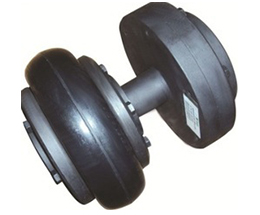
How Do Spacer Couplings Compare to Other Types of Couplings in Terms of Performance?
Spacer couplings offer distinct advantages and disadvantages compared to other types of couplings, making them suitable for specific applications:
1. Misalignment Tolerance: Spacer couplings have limited flexibility and can handle only minor misalignment between shafts. In contrast, flexible couplings like elastomeric and gear couplings can accommodate higher levels of misalignment due to their elastic properties.
2. Torque Transmission: Spacer couplings provide excellent torque transmission capabilities, making them suitable for heavy-duty applications. They can efficiently transfer torque between shafts without backlash.
3. Maintenance Requirements: Spacer couplings are relatively simple in design and do not require frequent maintenance. They do not have moving parts or wearing elements, reducing the need for regular inspection and replacement.
4. Torsional Stiffness: Spacer couplings offer high torsional stiffness, ensuring precise and reliable torque transmission between the connected equipment.
5. Installation and Alignment: Installing a spacer coupling requires careful alignment between shafts. While it may be more involved compared to some flexible couplings, proper alignment is essential for optimal performance.
6. Cost: Spacer couplings are generally more cost-effective than some high-performance flexible couplings, making them an attractive choice for various industrial applications.
7. Application Suitability: Spacer couplings are commonly used in applications where rigid and reliable torque transmission is required, such as pumps, compressors, and other heavy machinery.
8. Operating Conditions: Spacer couplings can handle high temperatures, making them suitable for applications in challenging environments.
When selecting a coupling for a specific application, it is essential to consider the specific needs of the system, including the required misalignment compensation, torque transmission capacity, maintenance requirements, and operating conditions. Each coupling type has its strengths and limitations, and the choice will depend on the unique demands of the application.
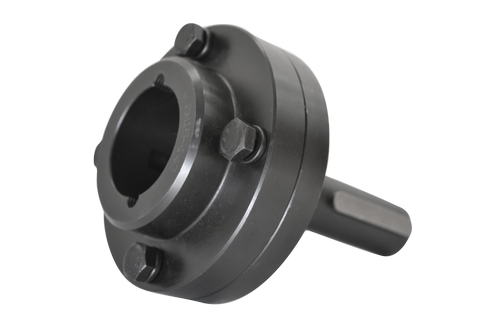
Impact of Spacer Couplings on the Overall Reliability of Connected Equipment
Spacer couplings play a critical role in enhancing the overall reliability and performance of connected equipment in power transmission systems. Here are the ways spacer couplings impact equipment reliability:
1. Misalignment Compensation: Spacer couplings can accommodate various types of misalignment, including angular, parallel, and axial misalignment. By allowing for flexible alignment between the connected shafts, spacer couplings help prevent undue stress and wear on the equipment components. This feature minimizes the risk of premature failures due to misalignment issues.
2. Vibration Damping: Spacer couplings act as shock absorbers, dampening vibrations and shocks generated during the operation of rotating machinery. By absorbing and dispersing these forces, spacer couplings reduce the transmission of vibrations to the connected equipment. This, in turn, reduces the risk of fatigue and vibration-induced failures, contributing to improved equipment reliability.
3. Overload Protection: In the event of sudden overload or torque spikes, spacer couplings can help protect the connected equipment from damage. The flexibility of spacer couplings allows them to absorb and dissipate excess torque or shock loads, preventing catastrophic failures in the system.
4. Reducing Wear and Tear: Spacer couplings minimize friction between shafts and mechanical components by allowing smooth and flexible movement. This reduces wear and tear on shafts, bearings, and other elements, leading to extended equipment life and enhanced reliability.
5. Enhanced Service Life: The ability of spacer couplings to compensate for misalignment and reduce vibration-related stress on connected equipment components results in extended service life for the machinery. By reducing the occurrence of breakdowns and the need for frequent repairs, spacer couplings contribute to overall system reliability.
6. Maintenance Simplification: Spacer couplings often require less maintenance compared to rigid couplings. Their ability to handle misalignment reduces the need for frequent realignment, and their design typically includes fewer moving parts, reducing the likelihood of maintenance-related issues. This simplification of maintenance procedures contributes to improved equipment reliability.
7. Contamination Prevention: Some spacer couplings are designed to protect against the ingress of contaminants such as dirt, dust, and moisture. By preventing the entry of harmful particles, spacer couplings help maintain the integrity of the connected equipment, reducing the risk of component damage and improving overall reliability.
8. Application-Specific Design: Spacer couplings are available in various designs and materials to suit specific applications and industries. Choosing the appropriate spacer coupling that meets the unique requirements of the application further enhances the overall reliability and performance of the connected equipment.
Overall, spacer couplings promote smooth power transmission, minimize stress and wear on equipment components, and protect against adverse operating conditions. By contributing to increased equipment reliability and service life, spacer couplings play a crucial role in the efficiency and longevity of rotating machinery and power transmission systems.


editor by CX 2023-10-11
China wholesaler Drive Pipe Spline Shaft Disc Flange Gear Rubber Jaw Motor Spacer Beam Rigid Fluid Chain Nm Mh HRC Pin Fenaflex Spacer Elastomeric Flexible Gear Coupling
Product Description
Drive Pipe Spline Shaft Disc Flange Gear Rubber Jaw Motor Spacer Beam Rigid Fluid Chain Nm Mh HRC Pin Fenaflex Spacer Elastomeric flexible gear Coupling
Application of Shaft Chain Coupling
A shaft chain coupling is a type of coupling that is used to connect 2 shafts that are not perfectly aligned. The coupling consists of a chain that is connected to 2 sprockets, 1 on each shaft. The chain allows the shafts to move slightly relative to each other, which helps to compensate for misalignment.
Shaft chain couplings are used in a wide variety of applications, including:
- Conveyors: Shaft chain couplings are used in conveyors to transmit power from the motor to the conveyor belt.
- Pumps: Shaft chain couplings are used in pumps to transmit power from the motor to the pump shaft.
- Fans: Shaft chain couplings are used in fans to transmit power from the motor to the fan shaft.
- Generators: Shaft chain couplings are used in generators to transmit power from the turbine to the generator rotor.
- Wind turbines: Shaft chain couplings are used in wind turbines to transmit power from the turbine to the generator rotor.
Shaft chain couplings are a versatile and reliable type of coupling that can be used in a wide variety of applications. They offer a number of advantages over other types of couplings, including:
- Can compensate for misalignment: Shaft chain couplings can compensate for misalignment up to 2 degrees. This makes them ideal for applications where the shafts are not perfectly aligned, such as when the equipment is installed in a new location or when the equipment is subject to vibration.
- Easy to install: Shaft chain couplings are easy to install and maintain. They can be installed without special tools or training.
- Available in a variety of sizes and styles: Shaft chain couplings are available in a variety of sizes and styles to meet the needs of different applications. This makes it easy to find a coupling that is the right size and style for your application.
- Highly efficient: Shaft chain couplings are highly efficient, meaning that they transmit a large percentage of the power from the driving shaft to the driven shaft. This can save money on energy costs.
- Durable: Shaft chain couplings are durable and can withstand a wide range of operating conditions.
Here are some of the disadvantages of using shaft chain couplings:
- Cost: Shaft chain couplings can be more expensive than other types of couplings.
- Maintenance: Shaft chain couplings require periodic maintenance, such as checking the coupling for wear and tear and lubricating the chain as needed.
Overall, shaft chain couplings are a versatile and reliable type of coupling that can be used in a wide variety of applications. They offer a number of advantages over other types of couplings, but they also have some disadvantages. The best type of coupling for a particular application will depend on the specific requirements of that application.
| Standard Or Nonstandard: | Standard |
|---|---|
| Shaft Hole: | 8-24 |
| Torque: | >80N.M |
| Bore Diameter: | 19mm |
| Speed: | 4000r/M |
| Structure: | Flexible |
| Samples: |
US$ 9999/Piece
1 Piece(Min.Order) | |
|---|


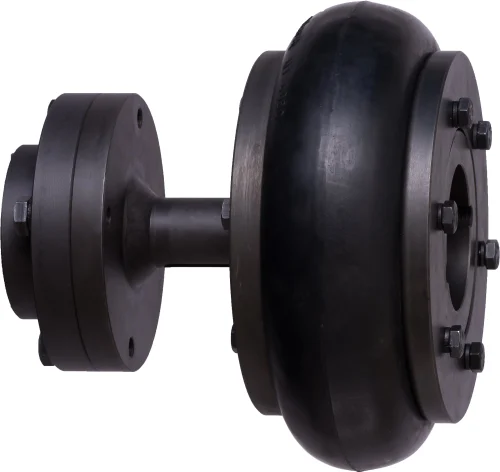
Can Spacer Couplings Handle Misalignment Between Shafts?
Spacer couplings are designed to handle some degree of misalignment between shafts, but their capacity to do so depends on the specific coupling design and the magnitude of the misalignment.
Unlike flexible couplings, which can accommodate significant misalignment through their elastic properties, spacer couplings are generally less forgiving when it comes to misalignment. However, they can tolerate limited angular, parallel, and axial misalignment.
The amount of allowable misalignment for a spacer coupling depends on factors such as:
- Coupling Design: Some spacer couplings, such as the sleeve or muff coupling, have relatively more flexibility and can handle more misalignment than others.
- Coupling Size: Larger spacer couplings may have a higher misalignment capacity than smaller ones.
- Material: Certain materials used in manufacturing spacer couplings may provide some level of flexibility to accommodate misalignment.
- Application Requirements: The specific needs of the application, including the type of connected equipment and the expected operating conditions, will influence the acceptable misalignment range.
It is essential to consider the manufacturer’s specifications and recommendations when using spacer couplings to ensure that the misalignment falls within the permissible limits. Excessive misalignment can lead to premature wear, increased vibration, and reduced coupling life. Therefore, precise alignment during installation is critical for optimal performance and longevity of the spacer coupling and the connected machinery.
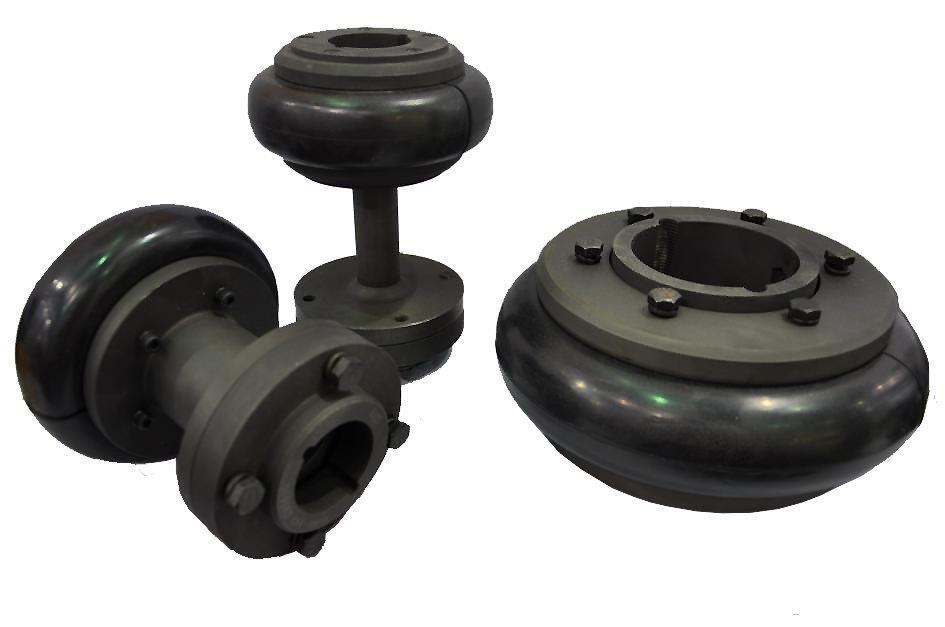
Use of Spacer Couplings for Motor-to-Shaft and Shaft-to-Shaft Connections
Yes, spacer couplings can be used for both motor-to-shaft and shaft-to-shaft connections in various mechanical systems and power transmission applications. The versatility of spacer couplings allows them to accommodate different types of connections between rotating machinery and shafts.
1. Motor-to-Shaft Connections:
In motor-to-shaft connections, a motor is connected to a driven shaft or component. Spacer couplings can be utilized to bridge the gap between the motor and the driven shaft while maintaining the required alignment. These couplings help transmit torque from the motor to the driven shaft efficiently, ensuring smooth power transmission. They also compensate for any misalignment between the motor and the driven shaft, reducing the risk of mechanical stress and vibration-related issues.
2. Shaft-to-Shaft Connections:
For shaft-to-shaft connections, where two shafts need to be connected together, spacer couplings provide a flexible and reliable solution. Spacer couplings can handle angular, parallel, and axial misalignment between the shafts, allowing them to operate smoothly even when there are slight deviations in alignment. This capability helps prevent excessive wear and premature failure of equipment components.
Whether in motor-to-shaft or shaft-to-shaft connections, spacer couplings play a vital role in enhancing the reliability and efficiency of power transmission systems. They help protect connected equipment from shock loads, vibrations, and misalignment, ultimately contributing to extended service life and reduced maintenance requirements.
It is essential to select the appropriate type and size of spacer coupling based on the specific application requirements, including torque capacity, operating speed, shaft size, and environmental conditions. Proper installation and alignment of the spacer coupling are crucial to ensure optimal performance and reliability of the connected equipment.


editor by CX 2023-09-28